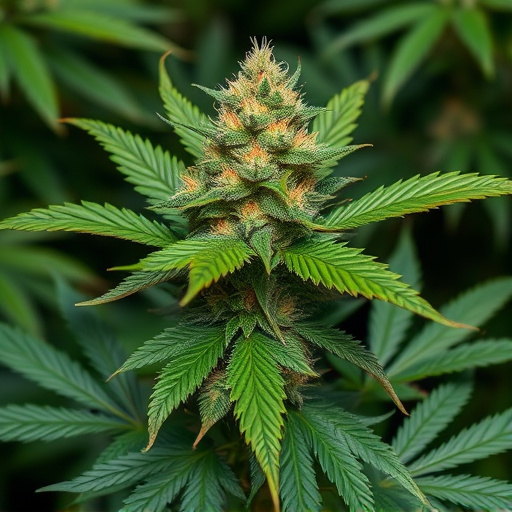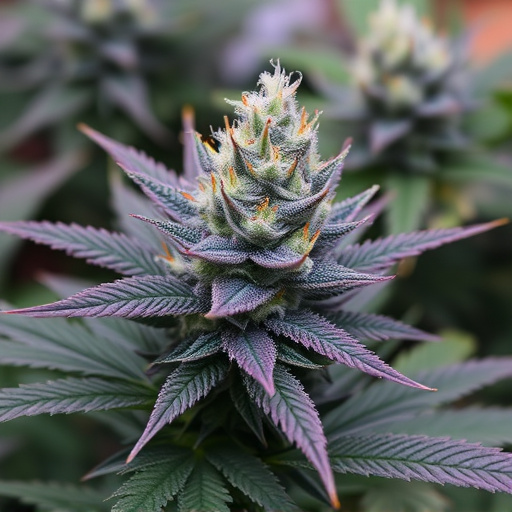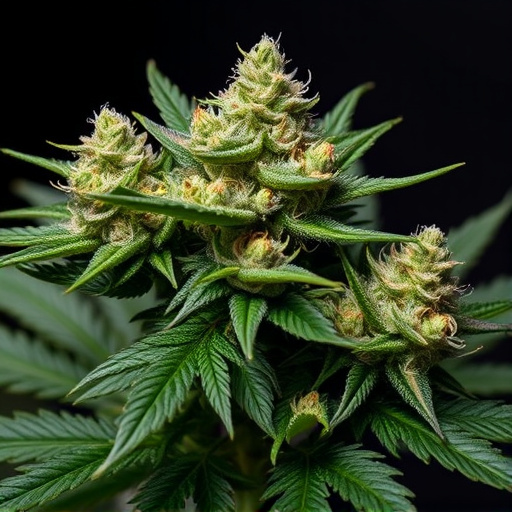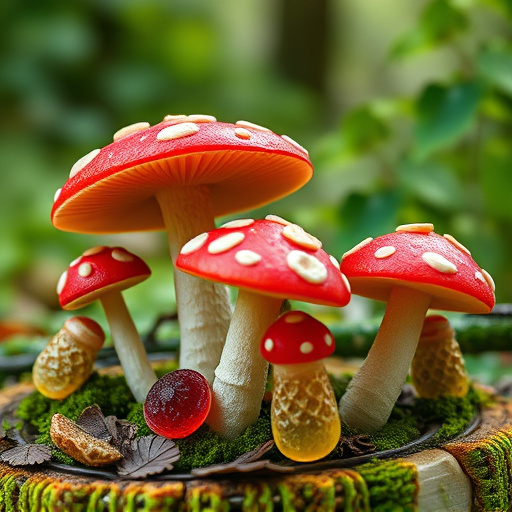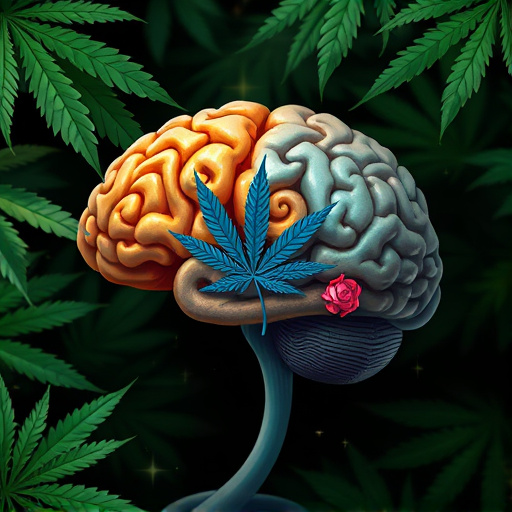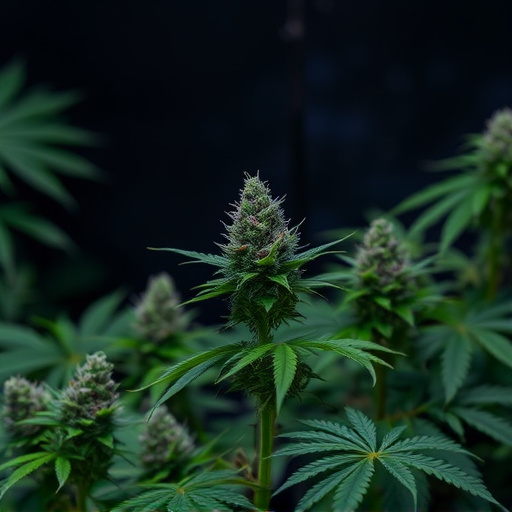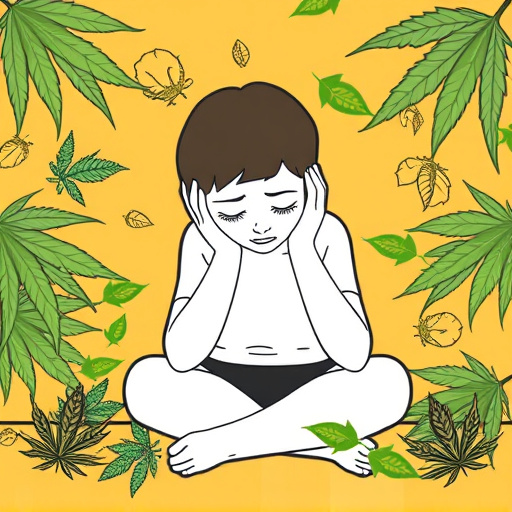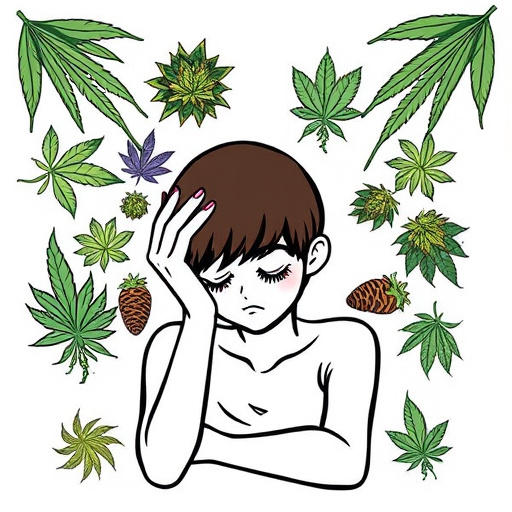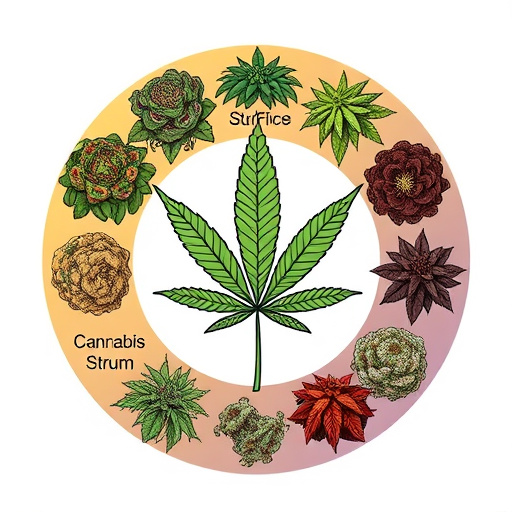Cannabis flowers' mesmerizing color shifts are governed by intricate biochemical processes involving pigments like carotenoids and anthocyanins, which emerge during maturity. These colors indicate potency and can hold therapeutic potential for conditions like depression. Terpenes, responsible for aroma and flavor, also interact with the endocannabinoid system to reduce stress and enhance mood, making specific cannabis strains valuable for managing depression. Environmental factors like light intensity, temperature, and nutrient availability influence flower colors, and understanding these factors is crucial for cultivators aiming to breed strains for therapeutic benefits.
Cannabis flowers’ color change is a fascinating process, offering more than just aesthetic appeal. Understanding this transformation reveals secrets that can enhance our well-being. This article delves into the intricate world of cannabis, exploring how pigments and environmental factors contribute to its vibrant hues. We uncover the impact of terpene profiles on mood, specifically focusing on strains beneficial for depression. By deciphering these elements, we aim to guide enthusiasts in selecting optimal cannabis strains for a positive experience.
- The Role of Pigments in Cannabis Flower Color Change
- Terpene Profiles and Their Impact on Mood: Exploring Cannabis Strains for Depression
- Environmental Factors and their Influence on Cannabis Flower Color Development
The Role of Pigments in Cannabis Flower Color Change
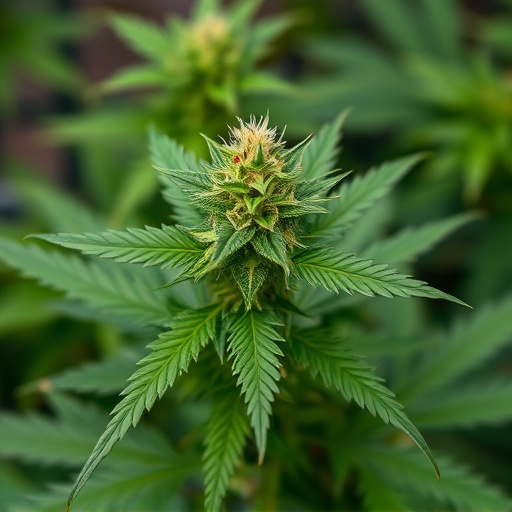
The captivating color transformation of cannabis flowers is a result of intricate biochemical processes, primarily driven by pigments. These pigments play a pivotal role in not only the aesthetic appeal but also the therapeutic attributes of different cannabis strains. As the plant matures, various pigments come into play, leading to the vibrant hues we associate with cannabis. Chlorophyll, abundant during the early growth stages, gives the plants their green color. However, as flowering sets in, other pigments like carotenoids and anthocyanins begin to dominate, causing the characteristic changes in color.
Carotenoids contribute to the yellow and orange shades, while anthocyanins, synthesized in response to environmental cues, are responsible for the red and purple tones. The interplay of these pigments is what creates the diverse colors seen across various cannabis strains, including those sought after for their potential benefits in managing depression. Understanding this natural process not only enhances our appreciation of cannabis beauty but also offers insights into the complex chemistry behind its therapeutic effects on conditions like depression, where specific cannabis strains with distinct pigment profiles may hold promise.
Terpene Profiles and Their Impact on Mood: Exploring Cannabis Strains for Depression

Cannabis flowers’ color change isn’t just visually striking; it’s a biological indicator, often signaling maturity and potency. But its true magic lies in the chemical compounds it contains, particularly terpenes, which play a pivotal role in shaping the plant’s aroma, flavor, and even therapeutic effects. For individuals seeking relief from depression, exploring cannabis strains rich in specific terpenes can be a game-changer.
Terpenes are volatile organic compounds that give cannabis its distinctive scents. Studies suggest that certain terpenes may interact with the endocannabinoid system, potentially influencing mood and emotion. For instance, myrcene, known for its earthy scent, has been linked to stress and anxiety reduction, while limonene, with its citrusy aroma, is associated with uplifting moods. Different cannabis strains accumulate these terpenes in varying levels, offering a wide array of options for those looking to manage depression through cannabis therapy.
Environmental Factors and their Influence on Cannabis Flower Color Development

The development of cannabis flower color is a fascinating process influenced by various environmental factors. These external conditions play a pivotal role in determining the vibrant hues exhibited by different cannabis strains, including those sought after for their potential therapeutic benefits in managing depression. Environmental cues, such as light intensity and duration, temperature fluctuations, and nutrient availability, all contribute to the plant’s color transformation during flowering.
For instance, exposure to varying light spectrums can prompt cannabis plants to produce specific pigments responsible for colors like deep reds, oranges, and purples. Cooler temperatures often encourage the development of more intense colors, while optimal nutrient levels can enhance overall pigment expression. Understanding these factors is essential for cultivators aiming to breed cannabis strains for depression relief, as desired color profiles can indicate potential therapeutic properties and aesthetic appeal.
Cannabis flower color change is a multifaceted process influenced by pigments, terpenes, and environmental factors. Understanding these elements not only deepens our appreciation for this complex plant but also offers insights into crafting tailored cannabis strains for depression. By exploring the interplay of pigments that create vibrant hues and the terpenes that modulate mood, along with the impact of growing conditions, we can unlock new potential in cannabis as a therapeutic tool, providing relief and enhancing well-being for those seeking natural remedies.
